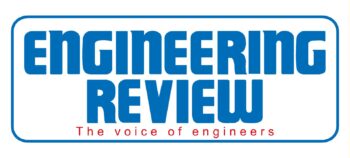Technology ventures cannot succeed unless they are well managed, with timely, cost-effective, and desired results supplied to the project.
A crucial optimal approach is defining the project’s goals and boundaries with precision. Establishing the project’s objectives, purpose, and scope in detail is crucial before starting any technology project. To understand the needs and expectations of stakeholders, close collaboration is required. The project team may stay focused on its initial goal by having clear objectives that serve as a roadmap and prevent scope creep. In technology project management, a clear project plan is yet another crucial best practice. To accomplish the project’s objectives, a project plan must specify the activities, deadlines, materials, and dependencies. It helps the project team understand their duties and due dates by acting as a guidebook. A risk management strategy that describes potential obstacles and mitigating actions is part of an extensive project plan. With this proactive approach, the project team may foresee problems and put solutions in place before they become significant obstacles. Technology project management success is largely dependent on effective communication. It’s critical to have open lines of communication with stakeholders as well as the project team. A mutual grasp of the project’s state is facilitated by frequent status reports, progress updates, and open dialogue regarding setbacks and achievements. Team members are more likely to collaborate, develop trust, and make sure that everyone contributes toward the same objectives when there is transparency.
The changing dynamics of the technology business necessitate adaptation in project management. With regard to technology projects, agile project management techniques have grown in favor. Iterative development, teamwork, and the capacity to react swiftly to shifting requirements are all emphasized by agile. Project teams can be more adaptable by implementing agile principles, which can help them adjust to changes in stakeholder priorities, market conditions, or technology as the project progresses. In technology project management, resource management is an essential best practice. This entails determining and assigning the project’s appropriate personnel, expertise, and resources. In order for team members to fulfill project criteria, project managers must make sure they have the requisite training and experience. Optimizing the utilization of existing tools and technology to increase project efficiency is another aspect of resource management. Every project needs risk management, but technological ventures require it much more. From the beginning in the project’s life cycle, project managers can identify possible risks and create plans to mitigate them. By being proactive, possible problems have less of an effect on project costs and schedules. The project’s overall resilience is enhanced by routine risk assessments and modifications to the risk management plan.
Testing and quality control are essential to the success of technological projects. Putting in place thorough testing procedures aids in finding and fixing problems before they affect end users. Quality assurance makes ensuring that the technology is defect-free and satisfies the criteria. Throughout the project, testing should be incorporated as an ongoing, iterative process to assist maintain a high standard of product quality. In technology project management, stakeholder management and engagement are crucial factors. Success in a project depends on including stakeholders at every stage, from planning to execution to closing. A good rapport between the project group and stakeholders is facilitated by frequent communication, stakeholder feedback meetings, and prompt resolution of concerns. Stakeholder expectations are met and the project stays in line with organizational objectives when stakeholders are managed well.
For technology initiatives to be successful and long-lasting, documented evidence is an ideal approach that is sometimes disregarded. User manuals, design documents, requirements specifications, and project plans are all examples of comprehensive documentation. Ensuring that future developments can be effortlessly integrated is made possible by thorough documentation, which also helps with troubleshooting and maintenance. Throughout the project, ongoing observation and evaluation of performance are essential. Project managers may evaluate their work, pinpoint areas for development, and make well-informed decisions by using key performance indicators (KPIs). Monitoring key performance indicators (KPIs) on a regular basis guarantees that the project continues on schedule and that deviations may be quickly adjusted. An important stage of project management that is frequently missed is post-implementation review. Analyzing the technology project’s results in-depth—including how it affected operations and user satisfaction—provides important information for subsequent projects. Lessons learned, best practices and opportunities for process improvement in project management are identified with the aid of this retrospective analysis.
A project must be closed by not just completing its deliverables but also making sure that it is properly recorded and disseminated. A thorough completion report should include an analysis of the project’s achievements, difficulties, lessons discovered, and suggestions for similar projects in the future. Formal closure guarantees that all unfinished business is resolved and that all parties involved are aware of the project’s results and accomplishments. Technology project management standards include a flexible and all-encompassing methodology. Technology projects are more successful when certain practices are followed, from defining clear objectives and conducting thorough planning to communicating effectively, including stakeholders, and conducting post-implementation evaluations. Project teams may successfully navigate the ever-changing technological world and provide results that meet stakeholder expectations and corporate goals by adopting agility, the ability to adapt, and a proactive approach.
